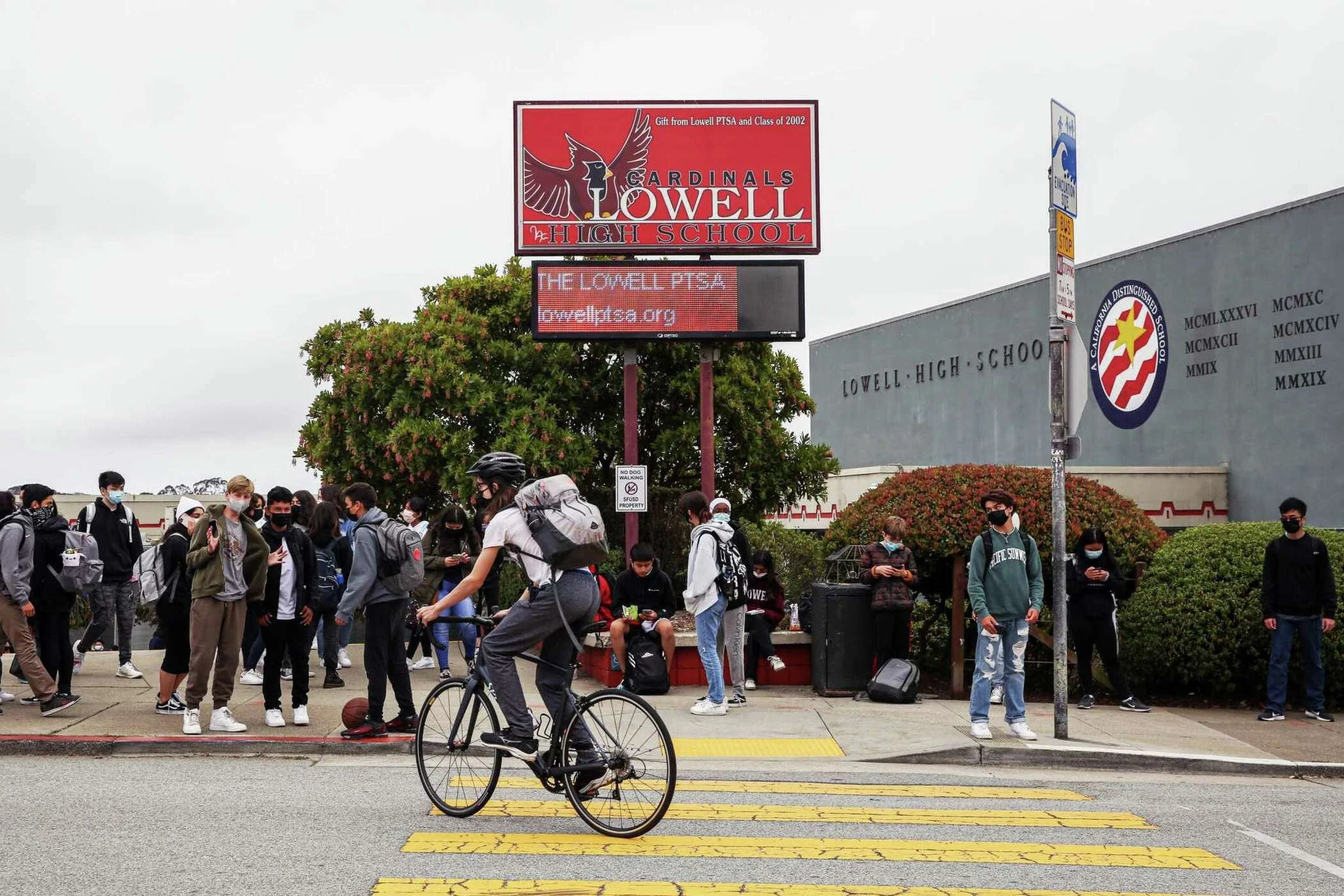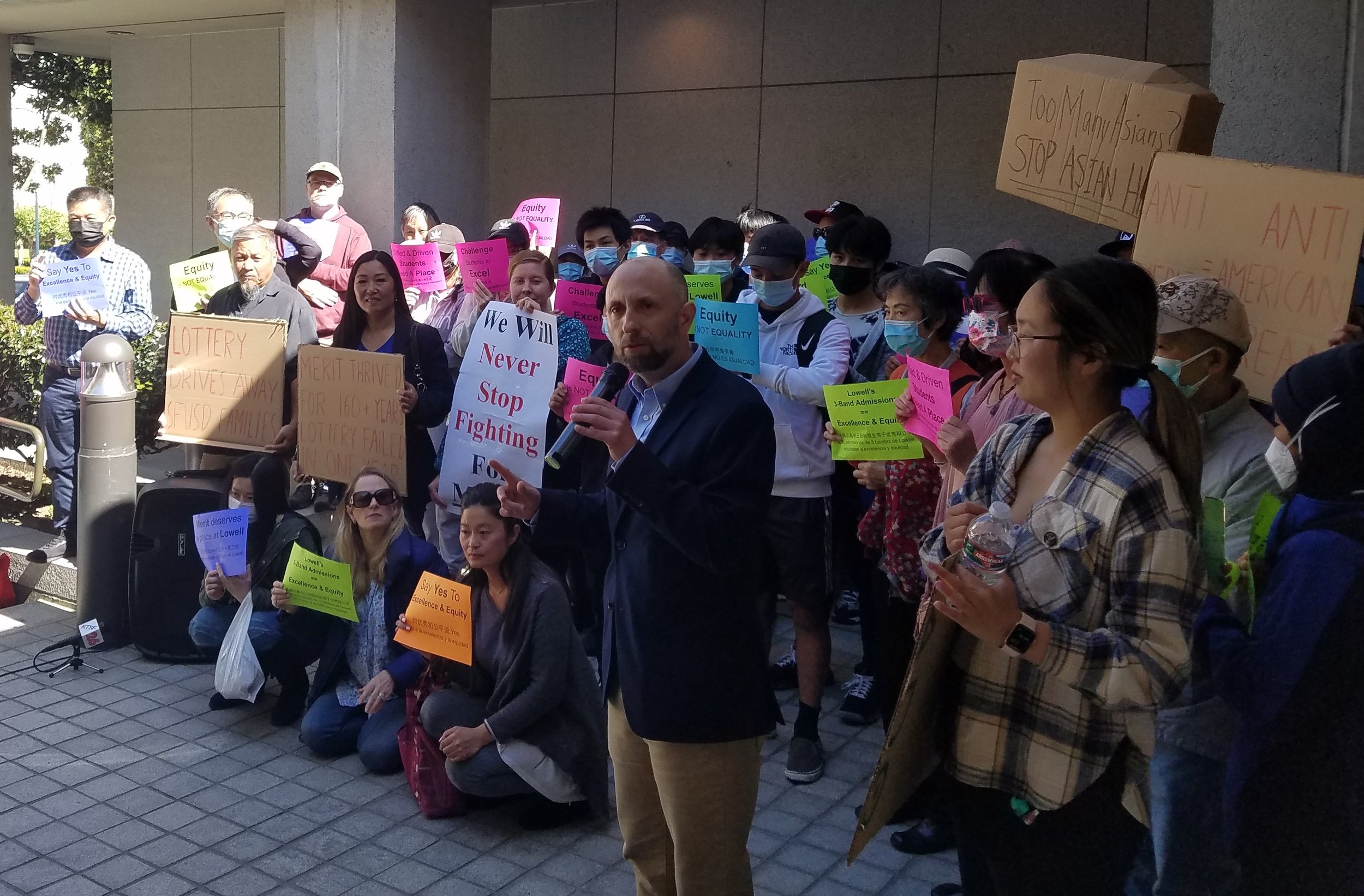Why Merit Matters At Lowell
Photo credit: Bronte Wittpenn/ San Francisco Chronicle
By Joel P. Engardio
We should restore merit-based admissions at Lowell High School and create more pathways and incentives to increase the diversity of applicants. We should also commit to creating more high schools like Lowell with high academic standards — and providing the support students need to achieve.
There must be a focus on ensuring students in every elementary and middle school are set up for success.
Merit-based programs matter because parents leave public school when their kids want to take advanced classes that aren’t offered. Families that can’t afford private education relied on Lowell.
UPDATE: The school board voted 4-3 on June 22, 2022 to restore merit-based admissions at Lowell High School. Joel Engardio advocated for the return along with parents and Lowell alumni: “Merit is not a four-letter word.”
Background
For many decades, Lowell was San Francisco’s only academically merit-based high school. Yet the school board ended merit-based admissions at Lowell in 2021 and turned it into a lottery. It was a rushed process with little community input.
New students who weren’t prepared for the academic rigor of Lowell suffered as a result. Incoming freshmen received far more failing grades after the admissions change. “Of the 620 students in Lowell’s freshman class, 24.4% received at least one D or F grade during the fall semester, compared with 7.9% of first-year students in fall 2020 and 7.7% in fall 2019,” the San Francisco Chronicle reported.
Lowell didn’t “offer enough tutoring or academic support services this year to all students who needed them,” Lowell PTSA President Tiffany Abuan told the Chronicle.
Instead of setting students up for failure with a rushed change to a lottery system, we should better prepare students who want to attend a school focused on academic achievement. Ending merit-based admission at Lowell is not the answer.
Why merit-based matters
As one of the best-ranked schools in the nation, Lowell is a popular option for families who can’t afford private school. Many of the students are children of Asian immigrants. More than one-third of Lowell students belong to low-income families.
San Francisco’s public school system has long refused to treat families like partners. Instead, we drive families away by telling them bright kids can’t take Algebra in the 8th grade and that advanced placement classes in high school are bad. This is why so many families leave San Francisco — or opt for private school — when their children become school age.
What about diversity?
The school board said it was turning Lowell into a lottery admission to increase diversity and address a culture problem. Lowell had a majority Asian student population, in a school district where the largest percentage of the student population is Asian.
The demographics of San Francisco’s public schools are 35 percent Asian, 31 percent Latino, 14 percent white, 10 percent multiracial, and nine percent Black.
A study by Families for San Francisco used school district data to show that Lowell is not the only high school with a demographic imbalance. Others are worse and Lowell falls in the middle. The same can be said for Lowell’s culture/climate scores on district-wide student surveys.
Yet Lowell was singled out, even when the school’s merit-based admission policy was already focused on increasing diversity. It had designated up to one-third of the incoming 9th grade class for under-represented students.
John Trasvina, the president of the Lowell Alumni Association, explained the process: “Thirty percent of Lowell admissions offers are set aside for promising students who do not reach the scores of the other 70 percent but are working through economic or family hardship and have demonstrated school leadership and resilience factors that will help them succeed. A portion of that 30 percent is further set aside for students from schools that do not otherwise send many students to Lowell and are considered under-represented.”
History of policies with bad outcomes
In 2010, the school board disregarded the recommendations of professional staff and ended up creating a lottery system that made our schools more segregated. Stanford University did a study that concluded our complicated lottery system only made things worse and our schools would be more diverse if kids could just walk to the school in their own neighborhood.
I wrote about this in my Examiner column in 2013:
Stanford’s Center for Education Policy Analysis presented data to the school board last fall that showed families in San Francisco “tend to select schools with higher proportions of students as the same race as them.”
“It shook me a bit,” said Matt Haney, who was elected to the school board last year. “People are picking schools that look like them when their neighborhood school would actually be more diverse if everyone just went there.”
The San Francisco Public Press published a comprehensive report in 2015 titled “As Parents Get More Choice, San Francisco Schools Resegregate.”
In 2018, the school board finally voted to phase out the failed lottery system. They still haven’t taken action.
Next steps
We must demand a public school system that is willing to listen to the data, give parents what they actually want, and provide the education that our students deserve.
This starts with:
Ensuring merit-based admissions remain at Lowell High School.
Returning to neighborhood schools.
Requiring that academics are prioritized when the school district uses city funds.


